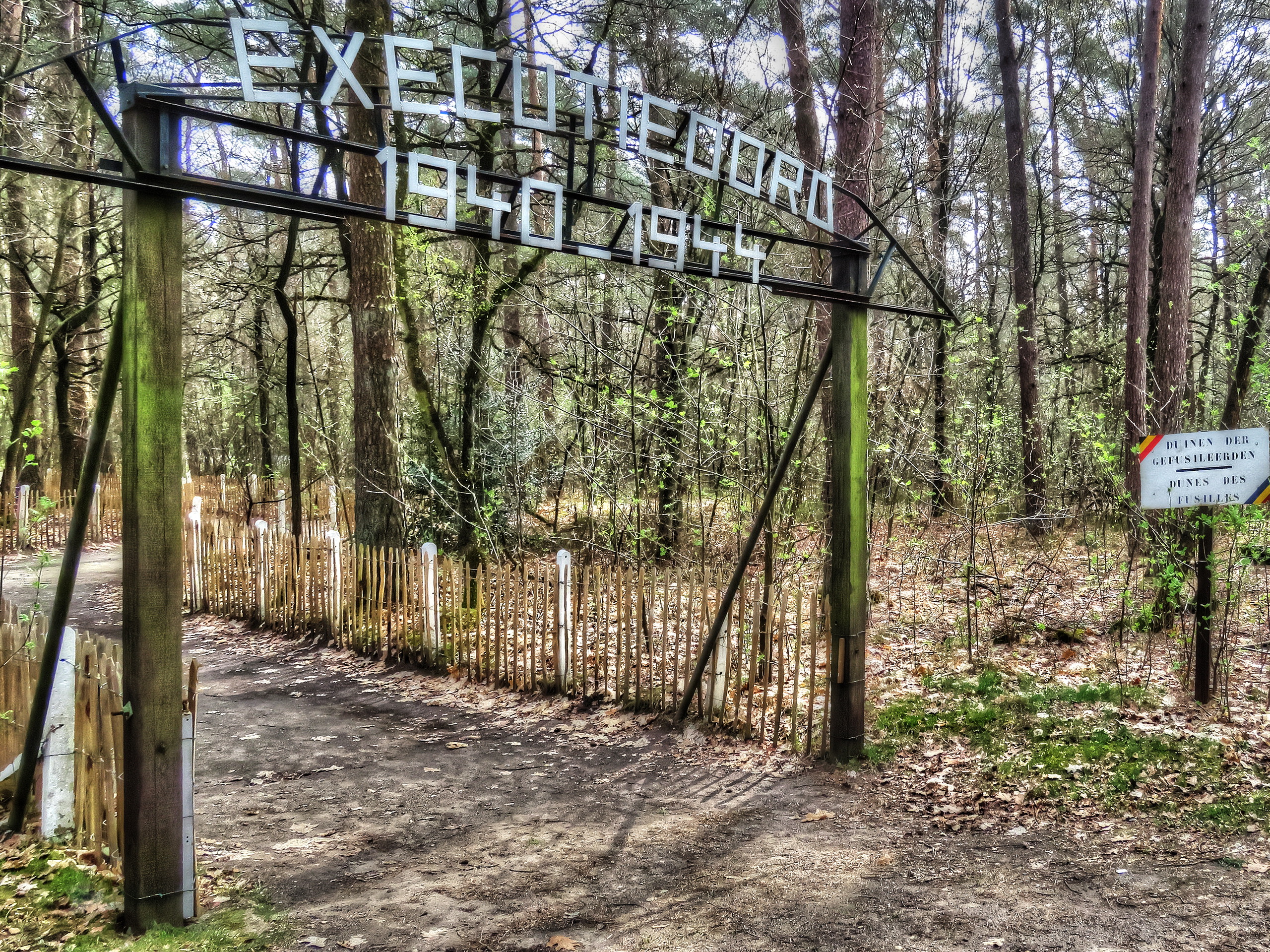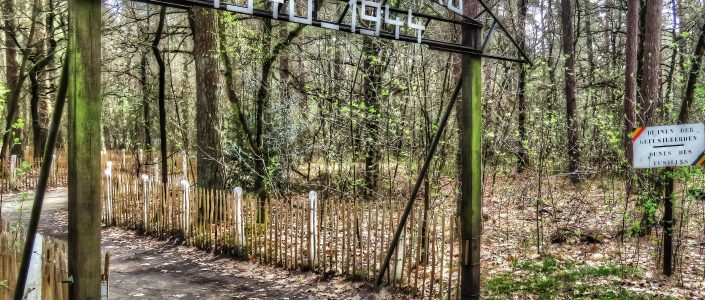Dune Of The EXECUTED

Deep in the forest of the Beverlo Camp lies a hidden war cemetery, only known in the area as the “Secret Cemetery”. During the Second World War, only local residents knew about the lurid place because they heard groans and screams at night. Here the German Army executed and buried dozens of resistance fighters. The site is part of the military training area of Leopoldsburg. A military prohibition sign forbids entry, yet visitors are tolerated.
German soldiers cynically called the unfortunate place the “Rozenhof” (= rose garden). A post-war association of former resistance fighters then renamed the place “Duin der executed” (= Dune of the executed). Above the entrance hangs an old inscription with the name “Executieoord 1940-1944” (=Place of execution 1940-1944). But for generations, everyone who knows about the existence of this doom site has only spoken of the “Secret Cemetery”.
Immediately after the liberation in September 1944, Allied soldiers found 204 graves. Numbered posts each indicated a grave. 174 victims would be identified in the years that followed, most of them were people, registered by the Germans as resistance fighters. They had all been sentenced to death by the German Court Martial. The first executed in 1942 were executed elsewhere and then buried in the “Secret Cemetery”.
Execution posts and impact
Gradually, the executions took place on the spot. Convicts were brought in trucks at night. They got the bullet in the beam from the headlights of the trucks. Although these are no longer the original, four execution poles and a wooden impact wall are still exactly at the place of the executions.
Residents of ‘Bosveld’, the nearest hamlet, knew all too well what was happening, but no one dared to speak. The Germans had chosen a top secret cemetery because they feared that cemeteries of resistance members could become a place of pilgrimage. Relatives of executed resistance fighters were also not allowed to know where their loved ones were buried.
Horrible job
In the years after the war, the secret cemetery was cleared. The remains of the victims who could be identified were reburied in their congregation of origin. Local law doctors did the ghastly work. One of the law doctors even had to determine that his missing son was buried here. After the clearance a memorial was erected. Later, 174 identified resistance fighters were given a white concrete cross. It is suspected that not a single body remains on the site, although there is no certainty of this.
Although the “Secret Cemetery” is part of the military domain of Leopoldsburg, it is located on the territory of the municipality of Hechtel-Eksel. For several years now, the municipality has been taking care of the maintenance of the hidden place. Wild boars are a particularly nuisance. The cemetery is accessible via a military concrete track (‘Doorgang E’). At the military pump house (a white house surrounded by a concrete wall) you have to turn. Then you arrive on a concrete track belonging to the Belgian Defense. Do not leave this road! Follow it for a kilometer and you will arrive at the Secret Cemetery.
This article is also available in
![]() Nederlands
Nederlands

